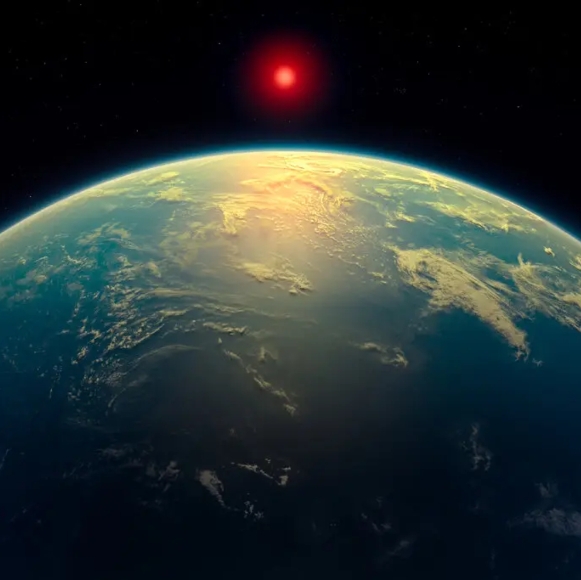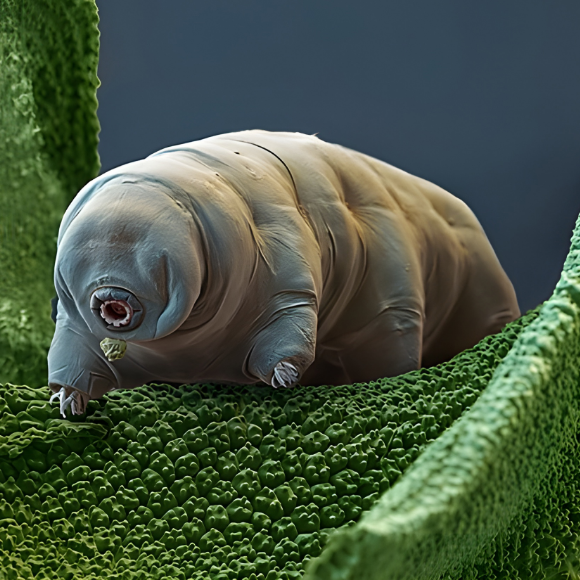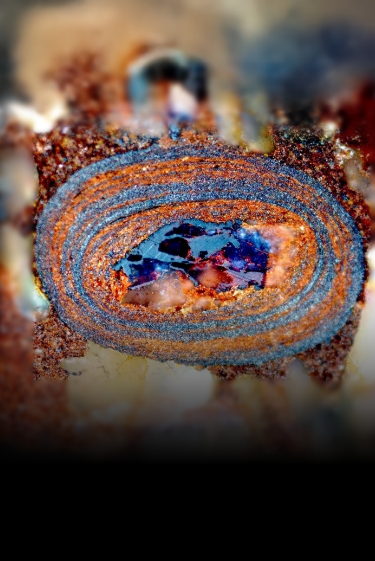NASA Sets Date for Crewed Lunar Mission: This Week in Space
NASA announced that it may send humans on a flight around the Moon as early as this coming February and named a new group of astronauts. Russian mice have returned from space, and new satellites are en route to study the Sun. This Week in Space.

29 September 2025
|

7 minutes
|
New and Experienced Astronauts
NASA this week introduced ten new candidates for its 24th astronaut class: six women and four men. It is the first group selected since 2021, and for the first time in the agency’s history it includes a candidate who has already flown in space. Training will begin this coming January. Over two years, the candidates will prepare for assignments to the International Space Station and its planned commercial successors, to the Moon, and potentially beyond.
The group, aged 34 to 43, was chosen from more than 8,000 applicants. Six are pilots, and three bring extensive experience from NASA or SpaceX. Among them are Anna Menon, 39, a biomedical engineer and long-time NASA flight controller who flew on SpaceX’s Polaris Dawn mission in 2023; Ben Bailey, 38, engineer and U.S. Navy test pilot; Lauren Edgar, 40, a geologist who has spent 17 years with NASA’s Mars and lunar research teams; Adam Fuhrmann, 35, U.S. Air Force fighter pilot and engineer; Cameron Jones, 35, U.S. Air Force test pilot and engineer; Yuri Kubo, 40, an engineer with 12 years at SpaceX; Rebecca Lawler, Navy test pilot and engineer; Imelda Muller, 34, anesthesiologist and former Navy officer; Erin Overcash, 34, Navy test pilot, engineer, and member of the USA Rugby Women’s National Team; and Katherine Spies, 34, engineer, helicopter pilot, and Marine Corps helicopter pilot.
At the unveiling ceremony, U.S. Transportation Secretary Sean Duffy—currently acting NASA Administrator, addressed the candidates: “You are America’s best and brightest, and we’re going to need America’s best and brightest, because we have a bold exploration plan for the future. We are going back to the Moon. This time, we’re going to stay, and from what we learn on our mission to the moon, we’re going to go to Mars, and we’re going to go beyond, into the unknown.” Duffy also stressed that the United States will not allow China to get ahead in the renewed race to land humans on the Moon: “I’ll be damned if the Chinese beat NASA, or beat America, back to the moon. We are going to win.”
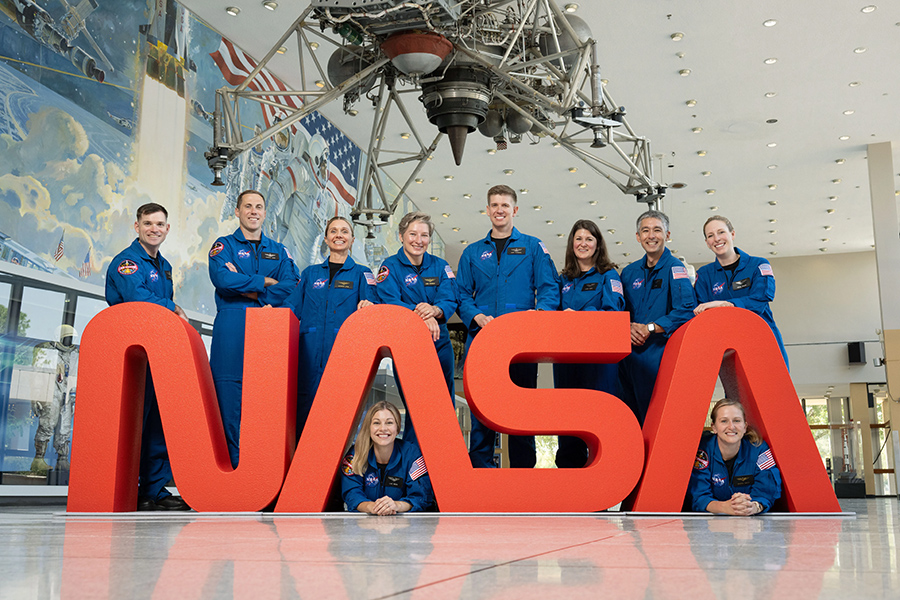
Beginning a two-year training program that will end with their certification as astronauts and assignment to space missions | The ten new candidates. Photo: NASA
Next Year We Will Orbit the Moon
As part of its preparations for returning to the Moon, NASA announced that the first crewed flight around the Moon—without a landing—could launch in less than six months, on February 5, 2026. Artemis II will be the first crewed mission of the Orion spacecraft and the final step before a lunar landing on Artemis III, officially planned for 2027. At a press conference at the Johnson Space Center in Houston, NASA also revealed the name of the Orion spacecraft that will carry the astronauts: Integrity.
“We’re going to launch when this vehicle is ready, when this team is ready, and we’re going to go execute this mission to the best of our abilities,” said mission commander Reid Wiseman. “We might go to the moon — that’s where we want to go — but it is a test mission, and we are ready for every scenario as we ride this amazing Space Launch System on the Orion spacecraft, 250,000 miles away. It’s going to be amazing.”
Joining Wiseman are pilot Victor Glover, mission specialist Christina Koch, and mission specialist Jeremy Hansen of the Canadian Space Agency, a partner in the project. Hansen is the only crew member making his first spaceflight. If all goes as planned, Koch will become the first woman to travel to the Moon, and Glover the first Black astronaut—following 24 white men who made the journey during the Apollo program between 1968 and 1972. The ten-day mission is also expected to break the record for the farthest distance humans have traveled from Earth, as the crew orbits the Moon at an altitude of 14,500 kilometers above its far side. The current record was set by Apollo 13, which nearly ended in disaster after an explosion en route to the Moon.
In contrast to the combative declarations of NASA’s acting Administrator, Sean Duffy, the Artemis II crew struck a more conciliatory tone when asked about the lunar race with China. “We’re just going to pursue excellence,” said Hansen. “That’s how you win a space race, and that’s just how you move our countries forward. More importantly, that’s how you create an environment where you might encourage others to collaborate.”
Glover also emphasized that this is a different kind of race. “The race that I think the most about is the relay race that we’re in. We are going together, and our mission success is built on handing off, starting off with Artemis III — that sets up our country and our partners to go back to the surface of the moon.”
Despite the optimism expressed at the press conference, the future of the Artemis program remains uncertain. For now, it depends on an aging launch vehicle whose liftoff was postponed numerous times before the uncrewed Artemis I mission finally flew, and on a spacecraft that is not designed to land on the Moon. The lander for the first crewed Artemis missions is expected to be a variant of SpaceX’s Starship, which is itself running significantly behind schedule. Even if Artemis II does launch in 2026, it will come more than three years after Artemis I, and there will likely be at least a similar delay before Artemis III attempts a lunar landing.

"We're going to launch when this vehicle is ready, when this team is ready, and we're going to go execute this mission to the best of our abilities.” The Artemis II crew: from right, Jeremy Hansen, Victor Glover (back), Reid Wiseman, and Christina Koch | Photo: NASA
The Return of the Space Mice
Seventy-five mice and more than 1,500 flies have returned from space after spending a month aboard the Russian research satellite Bion-M No. 2. The mission was designed to study how biological systems function under microgravity, high radiation, and other space conditions. Launched from Kazakhstan in August, the satellite orbited Earth in a polar orbit at an altitude of about 370 kilometers—an environment exposed to relatively high levels of cosmic radiation—before landing last weekend in southern Russia, near the city of Orenburg.
Research teams quickly arrived at the landing site and set up a dedicated tent to perform initial medical checks before the animals could re-adapt to Earth’s gravity. The test subjects were later transported to the IBMP research institute in Moscow for further study.
Alongside the mice and flies, the research satellite also carried plants and bacterial cultures to examine how microgravity and radiation affect biological systems, both at the level of individual organisms and entire populations. Researchers hope the findings will shed light on how animals adapt to space and eventually help develop improved methods to support humans on long-duration missions into deep space.
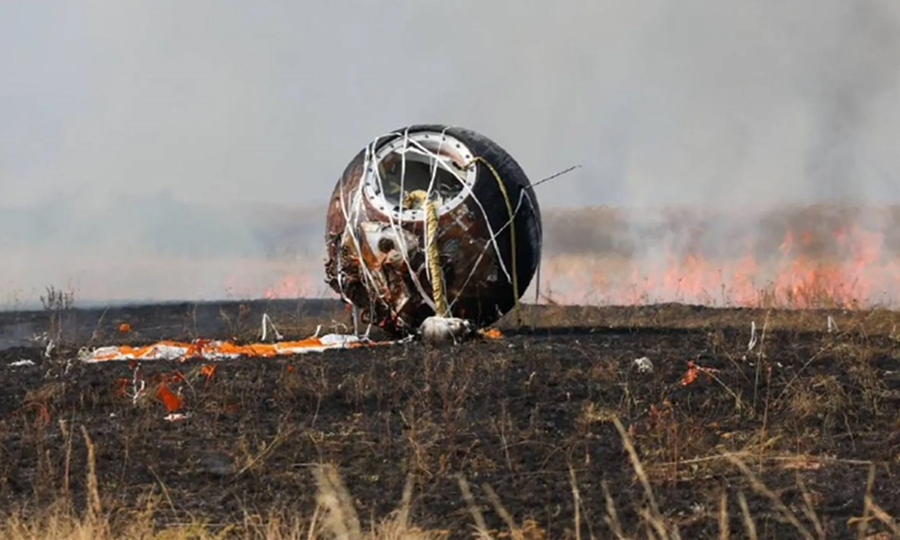
Fresh science from space: the Bion-M No. 2 animal capsule shortly after landing in the Orenburg steppe, as crews extinguish a small grass fire ignited by the spacecraft | Photo: Roscosmos / Ivan Timoshenko
Chasing The Sun
SpaceX has launched three research satellites to Lagrange Point 1, or L1, a gravitational balance point located between Earth and the Sun about 1.5 million kilometers away. Lagrange points are regions where the gravitational pull of two large bodies cancels out, allowing spacecraft to remain there with minimal energy. L1 offers a prime vantage point for observing the Sun, and the three satellites now en route are designed to study different solar phenomena and activity.
The main payload aboard the Falcon 9 rocket, launched last Wednesday from Florida, was NASA’s IMAP satellite. Its mission is to study the heliosphere—the vast bubble of space dominated by the solar wind, a stream of charged particles constantly emitted by the Sun. This bubble surrounds the entire solar system and separates it from the interstellar medium beyond. Equipped with ten scientific instruments, IMAP will examine the properties of the interstellar medium; attempt to understand the processes taking place in the boundary regions where it meets the solar wind at the edge of the heliosphere; explore how magnetic fields generated by the Sun interact with the interstellar medium; and investigate how particles are accelerated to extremely high energies throughout the solar system.
Video from NASA’s Goddard Center about the IMAP satellite and its mission:
Another satellite launched alongside it is SWFO-L1, developed by NOAA, the U.S. National Oceanic and Atmospheric Administration. This satellite is also aimed at studying the Sun, with instruments designed primarily to monitor the solar wind and to continuously measure the speed, the direction, and the intensity of the particle emissions. Researchers hope that the data collected from this satellite will eventually make it possible to provide more accurate forecasts of solar storms, which are powerful eruptions of solar wind that can disrupt space operations. Since such storms endanger satellites in orbit as well as human crews in space, especially those traveling in deep space beyond the natural protection of Earth’s magnetic field, more precise forecasts and longer warning times may help protect equipment, infrastructure, and future space missions.
The third satellite headed to L1 is designed to investigate the geocorona, the outermost layer of Earth’s atmosphere. This layer extends roughly from 240,000 kilometers to 650,000 kilometers above Earth, has been studied only sparingly, and much about its properties remains unknown. The Carruthers satellite, a joint project of NASA and the University of Illinois, is primarily intended to examine how the geocorona interacts with the solar wind and to gain a clearer understanding of the processes that create and sustain this unique atmospheric envelope.
Short video about the Carruthers satellite and geocorona research:



